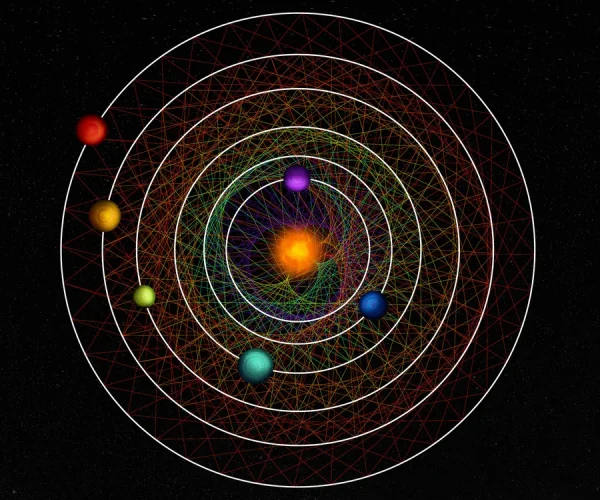Interstellar Dining: Gourmet Experiences
on the Cosmic Dinner Table

Have you Ever consider what might be in that vacant space up there? From a scientific standpoint, what ingredients are there on the cosmic dinner table that we find in our local grocery store (Periodic Table)?

Watch the first three components that are positioned at the grocery store’s entrance. The meat, milk, and bread are kept in cold storage. As you can see, these are the things we need in order to function in our daily lives. Similarly, hydrogen, helium, and lithium are present in the universe.
Let’s start with HYDROGEN.
Hydrogen is the lightest and most basic element, having only one proton in its nucleus, and was created fully at the Big Bang. Hydrogen is the element that occurs naturally in the universe and accounts for over two thirds of all atoms in the human body and over 90% of all atoms in the universe overall, including all atoms in the solar system. There are 94 elements in the universe. The largest magnetic field among the planets is produced by hydrogen in the core of the enormous planet Jupiter, which is under so much pressure that it acts more like a conducting metal than a gas. Within the 15-million-degree core of the Earth, 4.5 million tonnes of rapidly colliding hydrogen nuclei are converted into energy every second of every day.
HELIUM
Most people are aware that helium is an over-the-counter, low-density gas that, when inhaled, momentarily raises the frequency at which your larynx and windpipe vibrate, giving you a Mickey Mouse voice.
The second most common and simplest element in the universe is helium. It is far less abundant than hydrogen, but still makes up four times the total amount of elements in the universe. A cornerstone of Big Bang cosmology is the hypothesis that, in every area of the universe, at least 10 percent of all atoms are helium, formed in that proportion throughout the well-mixed primordial fireball that created our universe. Some parts of the universe may easily gather more helium than their ten percent share, since helium is produced by the thermonuclear fusion of hydrogen within stars, but as expected, no one has ever discovered a region of the galaxy with less helium.
Astronomers saw helium in the Sun’s corona during the 1868 total eclipse, around thirty years before it was found and isolated on Earth. As was previously said, Helios, the Greek sun deity, is the proper etymology of the word Helium.
LITHIUM
With three protons in its nucleus, lithium is the third most basic element in the universe. Lithium, like hydrogen and helium, was created at the Big Bang, but since lithium cannot be produced in star cores like helium can, it is destroyed by all known nuclear reactions. One final prediction of Big Bang cosmology is that lithium should make up no more than 1% of all atoms in any given part of the cosmos. As of yet, no galaxy has been discovered that has more lithium than the maximum amount produced by the Big Bang. The upper limit of helium and the lower limit of lithium together provide a strong dual limitation on experiments related to Big Bang cosmology.

That was only the beginning for you; the main course is still to come. There are a lot more important components out there that we are accustomed to. We’re going to eat dinner together while we place our order! Continue reading and exploring till then!
